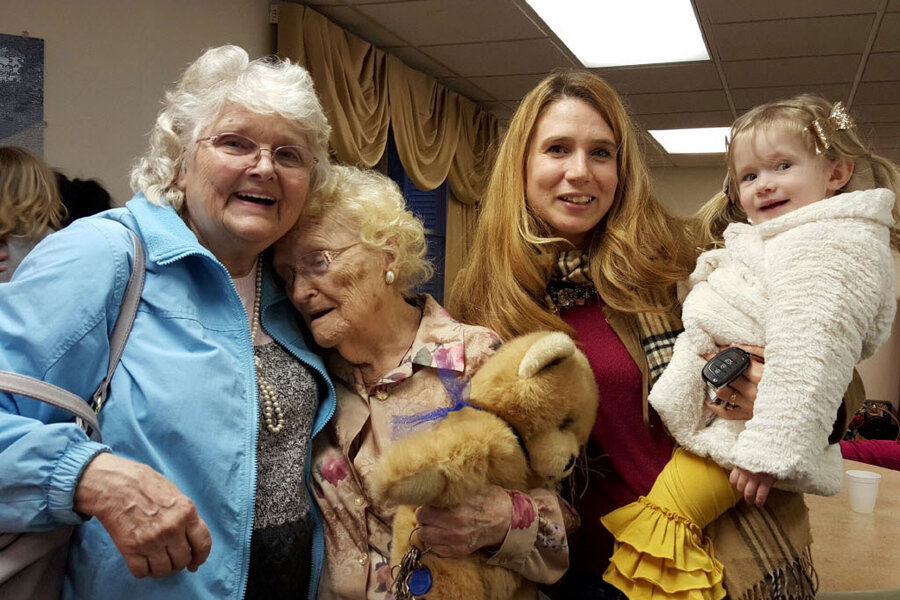Florida woman reunites with her birth mother after 82 years apart
Loading...
Growing up as an only child to an adopted family on Long Island, Betty Morrell didn’t spend much time dwelling on the past. She believed what her parents had told her: that her biological mother died during childbirth.
"I grew up a very happy child," she told the Associated Press. "I was so content in the family I was adopted by."
It wasn’t until Ms. Morrell was in her early 30s that she discovered her mother was still alive. So began a decades-long search that culminated last September when Morrell, with the help of her granddaughter, found out that her birth mother indeed was alive and well, living in an assisted living apartment complex in Hallstead, Pa.
Born in 1933, Morrell is now 82 years old. Her long-lost mother, Lena Pierce, is 96. The two of them didn’t meet until last month, when Morrell flew to Pennsylvania for a short visit. They met at the airport.
"The minute I saw her come through the security door, I just got goosebumps," Millie Hawk, one of Ms. Pierce's daughters who drove her to the airport, told the AP. "Mother reached for her; Betty said. 'Mom.' They hugged and cried."
Morrell, who was born Eva May, was taken away by social welfare officials soon after she was born. Pierce, then 13, was herself a ward of the state. Because it was a closed adoption, Morrell said it was like “hitting a brick wall” when she started searching for her years later.
Twenty years ago, her granddaughter, Kimberly Miccio, decided to step in. She was 12 at the time.
"My grandmother had been looking for a long time," said Ms. Miccio, who is now in her thirties and lives with her husband and three children a few minutes away from Morrell. "She had never tried through the Internet, so we started going through different sites."
The breakthrough came last year when Miccio found a distant relative of Morrell's through Ancestry.com, and that person put her in touch with Ms. Hawk.
"Kim and I got on the phone and called her," Morrell said. "I had found my baby sister, who's 65. We just clicked. It was like we had known each other all our lives."
The two have talked regularly even since by phone and Facebook. They’re planning a get-together in Florida in the spring. Morrell talks often to Pierce.
"Sometimes I have to remind my mother of who I am," she said. "I say, 'I'm your long-lost daughter Eva May.'"
This report contains material from the Associated Press.







